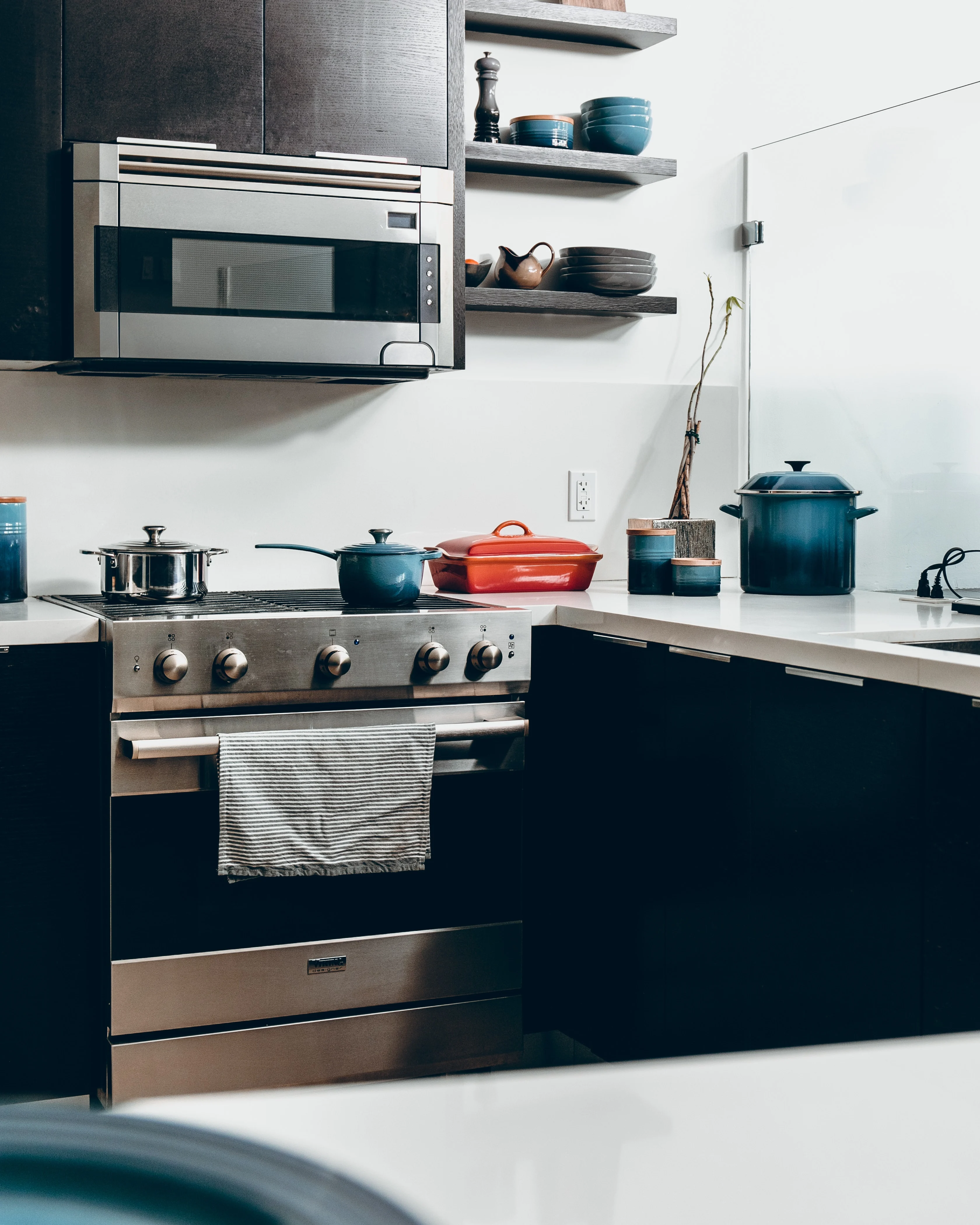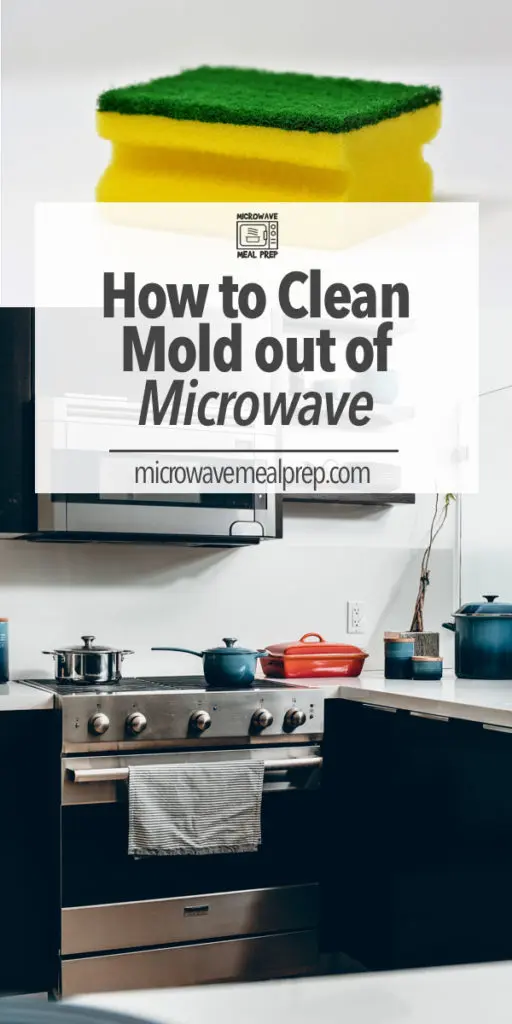Can you kill mold in the microwave? How do I clean a moldy microwave? How to clean a microwave that has mold in it? How do you clean mold in microwave vent?
If you left food in a microwave for a week, then I’m assuming the microwave stinks and you have a moldy mess! With the help of these microwave cleaning tips, removing grease and grime doesn’t always have to be a difficult task. Here are the steps to take to prevent mildew and clean mold out of the microwave.
Can mold grow in a microwave?
Whether the funk just crept up over time, or you forgot the reheated leftovers in am microwave, there are a number of reasons for mold growth.
However, a musty odor in the microwave is a tell tale sign of mold growth. Other signs to observe are green and black fuzzy patches growing in the corners.
Mold can grow anywhere when given the proper conditions, and that include your microwave.
Conditions for Mold Growth
Mold simply cannot grow in a clean and dry microwave. Mold spores are living organisms that require basic necessities for life.
Food particles left behind can provide the initial breading grounds for mold to take shape. Once it has a foothold, mold can spread quickly as the spores concentrate and multiply.
In addition to nutrients, mold needs a readily available supply of moisture. If moisture builds up inside a dirty microwave, you can count on a mold problem developing quickly.
Not an Ideal Environment
Even if your microwave is filthy, mold will struggle to grow under the circumstances. Mold does not pop up instantaneously and needs to linger around for some time before it will take hold.
Microwaves operate in an enclosed space that doesn’t accumulate humidity or encounter water damage like other household surfaces. However, allowing moisture to accumulate at the bottom of the microwave will allow for mold growth.
If a cup of water or you bowl of noodles when making ramen boils over while heating, this can create the prime condition for mold spores to accumulate. For that reason, it is best to wipe up any spills immediately after using the appliance. Furthermore, leave the microwave door open for a few minutes to air dry the interior.
Microwave Radiation Effects on Mold
Mold is not killed by microwave radiation. The extreme heat generated within the enclosed space can neutralize some active spores, however this isn’t something that should not be relied upon very heavily.
The mold colonies can regenerate and form new areas of growth if not fully removed. To ensure the elimination of mold development, you must clean and disinfect the entire area to delete the mold spores.
You can clean a microwave with chemicals to ensure immediate effectiveness with results of commercialized methods. No matter what you do, don’t use bleach because it will make the plastic turn brittle!
Vinegar can neutralize mold bacteria, which allows you to wipe the surface clean and remove excess moisture. These microwave cleaning hacks offer clear directions for disinfecting the appliance with vinegar. The smell of vinegar will dissipate and leave the microwave smelling fresh.
Citric acid within lemon also helps to disinfect the appliance and rid the surface of mold. Try cleaning a microwave with lemon as another alternative method. This method works great because it also leaves you microwave with the refreshing scent of lemon.
Hazard Warning
If mold is growing inside your microwave, it is not advisable to heat up food inside until you have fully cleaned and disinfected the interior. As previously mentioned, microwave radiation does not effectively kill mold spores.
As a result, you risk the potential hazard of the mold spores gathering on your food. Mold has been linked to illness, respiratory symptoms and allergic reactions, therefore its best to treat the matter with urgency without further delay.

How to remove mildew and mold from a microwave
Microwaves a made of mildew and mold resistant surfaces that generate tremendous heat and are also void of any nutritional value. However, if you fail to clean it out regularly, you risk the chance of ending up with a moldy mess.
Although a microwave doesn’t support the growth of mold, food left behind inside can. If food scrapes and moisture are present inside the microwave, then mold spores can transform into mildew and mold.
- Clean the microwave. Gently scrub the surface with a damp sponge and liquid detergent. Remove any spills and food crumbs present inside the microwave
- Dry the interior of the microwave. Mold growth requires nutrients and moisture. By eliminating both available necessities, you effectively prevent the spores from germinating and re-growing.
- Scrub with white vinegar. Vinegar is a powerful disinfectant to clean household surfaces. Mix vinegar 50/50 with water or use it full strength on heavy duty cleaning projects. Wipe the surfaces clean with vinegar and then allow it to sit for 15 minutes.
- Rinse clean with water. Dampen a cloth with clean water and then wipe the vinegar off the surfaces. The vinegar smell will dissipate within a few minutes if you leave the microwave door open to allow complete dryness.
- Prevent mildew and mold germination. Keep the microwave clean after each use. Furthermore, it is recommended to leave the door open afterwards to allow any steam to dissipate and avert it from being trapped inside the enclosed cavity.


Tanya
Sunday 18th of June 2023
I have news for you. Condensation does get into microwaves. Not sure how or why, but our microwave has it on the inside of the door every summer. And gets moldy inside often. Over the stove type and coastal humidity doesn't help the situation🤷♀️
Mary
Monday 24th of January 2022
My used microwave has been in a storage for years. It's cleaned, but the smell if mold is still there. Does it need to be tossed?
Joshua
Monday 24th of January 2022
I would recommend trying a few of these cleaning tips to remove the mold and mildew smell from the microwave. Reevaluate after it has been thoroughly cleaned, but the appliance should be ok to use if it has been cleaned well.